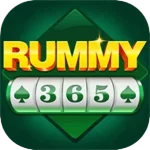Description
The card game known as Holy Rummy, or Rummy 500, was first played in the United States at the beginning of the 20th century. It is thought to have originated from the card game Conquian, which originated in Mexico. People of all ages and backgrounds enjoy playing Holy Rummy, which has since become more and more popular worldwide. The game’s social nature & broad appeal give it cultural significance.
It is frequently played at social events, parties, and family get-togethers as a way to connect and interact. Many find it to be a fun hobby because players compete amicably and play strategically. In popular culture, Holy Rummy has also been featured in television series, films, and books. This publicity has strengthened its position in the cultural landscape.
The game is a significant recreational activity that entertains & unites people, as evidenced by its ongoing appeal and capacity to transcend cultural boundaries. Holy Rummy is normally played with a standard 52-card deck & two to four players. Being the first player to reach a predefined number of points—typically 500—is the game’s goal. By arranging runs and sets of cards in their hands & placing them on the table, players can score points.
Three or more consecutive cards of the same suit make up a run, whereas three or four cards of the same rank make up a set. Each player is dealt a hand of cards at the start of the game, and the remaining deck is set face down on the table. After drawing a card from the deck or the discard pile, each player discards a card from their hand.
Players attempt to form runs and sets in their hands and place them on the table as the game progresses. A player can build upon sets & runs that have already been laid down by other players after laying down their own initial set or run. When a player accumulates a certain number of points, the game is over, and the winner is the one with the highest score. Due to the fact that players must keep track of the cards that have been played and predict the moves of their opponents, Holy Rummy demands strategic thinking, meticulous planning, & effective memory. Holy Rummy is not only a delightful and entertaining game, but it also has symbolic meaning that many players find meaningful. Forming sets and runs can be interpreted as a metaphor for achieving balance and harmony in one’s life.
Similar to how players try to arrange their cards in a logical order, people try to bring order & coherence to their own lives. Players must wait for the right cards to complete their sets and runs, mirroring the need to wait for the right opportunities in life. This aspect of the game also teaches patience and perseverance. Also, the cards themselves have symbolic meaning, with each suit standing for a distinct facet of life.
Diamonds can be a symbol of material wealth & prosperity, while hearts can stand for love and emotions. Dealing & shuffling the cards can be interpreted as a metaphor for the unpredictable nature of life and the necessity of flexibility in the face of change. All things considered, Holy Rummy can be seen as more than just a game; it can represent the journey of life and the universal search for harmony, balance, & fulfillment. Throughout the years, Holy Rummy has developed into a number of regional & cultural variants that enhance the game’s richness and diversity.
With two decks of cards and jokers, Indian Rummy is a well-liked variation. The game becomes even more complex with this variation, which adds new features like the use of wild cards and various scoring methods. Another variation is Gin Rummy, which has its own distinct set of rules and strategies and is played with just two players. Local variations of Holy Rummy are played in some areas, reflecting the customs and tastes of the local populace.
For instance, players in some Asian countries might employ distinct scoring schemes or adhere to particular joker usage regulations. The fact that Holy Rummy can be modified to fit various cultural contexts while maintaining its essential gameplay mechanics is demonstrated by these variations. Holy Rummy remains a popular game that encourages social interaction & offers hours of entertainment, regardless of the variation being played. A significant component of the game’s cultural significance is the customs and traditions that have been passed down through the generations and are frequently involved in playing Holy Rummy. Before starting a game of Holy Rummy, players in some communities are expected to perform certain rituals, like saying a prayer for good fortune or shuffling the cards in a specific way.
In addition to fostering a sense of unity among players, these customs give the game a sense of respect. Also, there are customs in some communities that revolve around playing Holy Rummy, like hosting frequent game nights or tournaments that unite players from all backgrounds. These gatherings offer chances for friendly competition, social interaction, and the sharing of tactics & advice for enhancing gameplay. The feeling of community that results from these customs emphasizes even more how important Holy Rummy is to the culture as a beloved game that strengthens bonds and promotes friendships among participants.
advantages of cognition. Players’ minds are kept active and sharp by the game’s demands on strategic thinking, problem-solving abilities, and memory retention. Gamers develop their mental agility and cognitive skills by continuously assessing their hands, predicting the moves of their opponents, and making well-considered choices about which cards to keep or discard. Benefits to the emotions. Also, because players lose themselves in the game and momentarily forget about their daily concerns, Holy Rummy offers a way to unwind & relieve stress. The game’s social component also promotes emotional health by strengthening bonds with players and offering chances for amusement, good humor, & shared experiences.
An Important Recreation. All things considered, playing Holy Rummy can benefit players’ mental clarity and emotional health, making it a worthwhile hobby for people looking for social interaction and intellectual stimulation. Holy Rummy remains a timeless game that provides mental stimulation, entertainment, and social interaction for people of all ages in today’s society. Holy Rummy has discovered new ways to connect with players worldwide and reach a larger audience with the rise of digital platforms and online gaming. Because online versions of the game offer flexible gameplay options and easy access, players can enjoy Holy Rummy at their own pace.
Holy Rummy may be further modified to accommodate contemporary tastes while keeping its essential gameplay elements as society develops. New game formats or variations might appear to appeal to a range of players or include cutting-edge elements that improve the overall gaming experience. Notwithstanding these possible modifications, Holy Rummy is probably going to maintain its cultural significance as a popular game that unites people and offers hours of fun for many generations to come.



